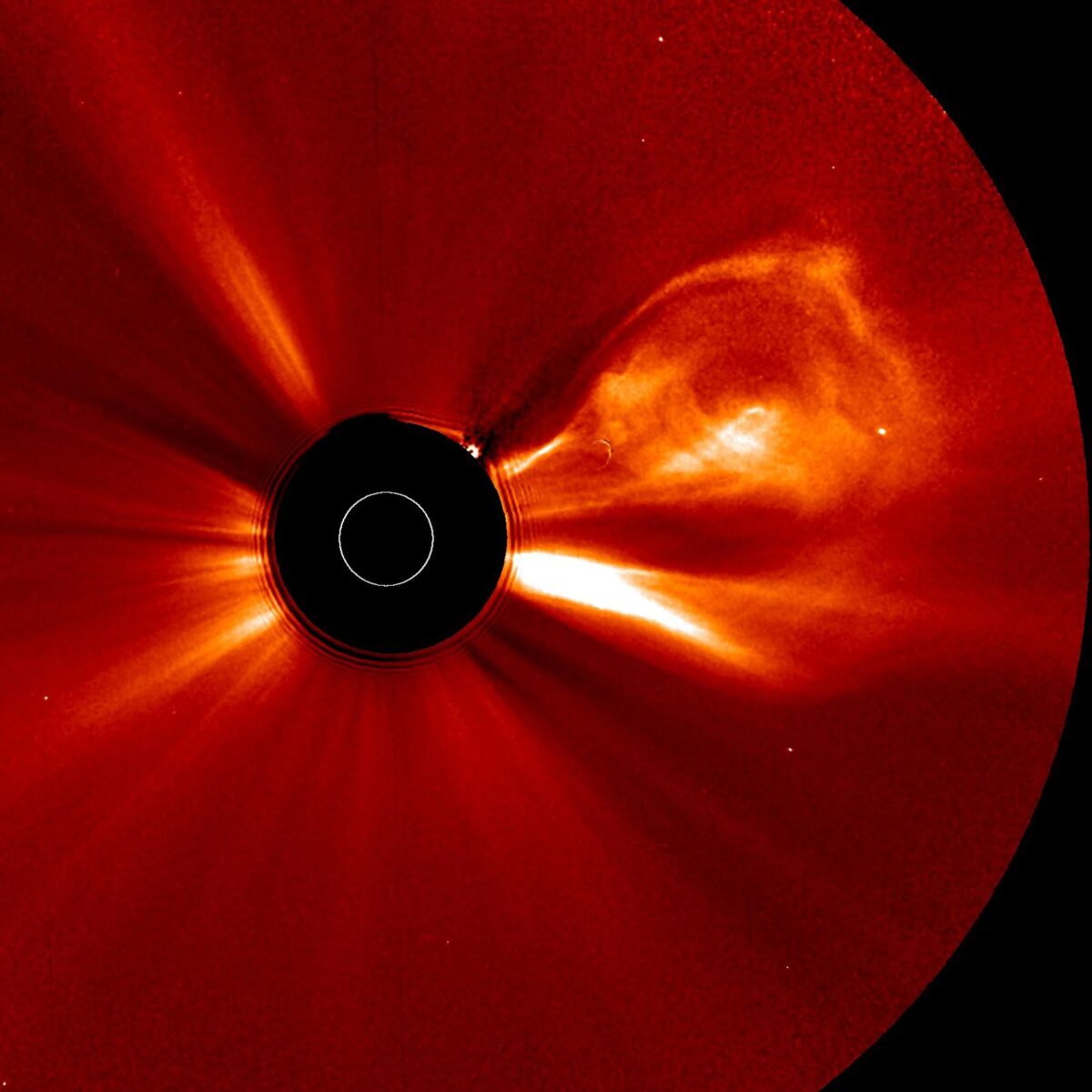Solar eruptions are frequently occurring phenomena on the Sun where large-scale magnetized bubbles and large amounts of electromagnetic radiation and energetic particles spread into space. The radiation and masses that solar eruptions release have potential impacts on Earth so it’s been an important area of study in the space physics and space weather communities. Flares are one kind of solar eruption and have been studied for hundreds of years; before the 1990s, they were believed to be the major driving sources of the disturbances in space. As observational technology improved, scientists began to realize that another kind of solar eruption—coronal mass ejections (CMEs), which accompany flares—play a more important role in producing the disturbances that could negatively affect Earth.
One of the most important motivations to study solar eruptions is their application to space weather forecasting. Flares are a relatively small-scale phenomenon on the Sun and affect the Earth mostly through electromagnetic emissions and energetic particles. Flares exhibit fairly predictable behavior, so it’s relatively easy to anticipate the effect they are going to have on the Earth and our systems: their electromagnetic radiations travel radially at light speed and energetic particles propagate roughly along the spiral interplanetary magnetic field lines at a relativistic speed and don’t spread out too much in space and time. However, CMEs are harder to predict. They affect the Earth through transient magnetized bubbles and associated shocks and energetic particles. They can travel with a wide range of speed from 100 to more than 3000 kilometers per second. Such a wide spectrum could appear in many other properties of CMEs, like strength, size, orientation and propagation direction. Moreover, during their journey through space, these properties can be altered by ambient solar wind. Thus, the effect they have on Earth and our systems becomes much more intricate to be forecast than that of flares.
There are lots of questions to be answered in predicting the significance of the effects that CMEs could have on Earth. The primary questions, in logical order, are: Will the CME hit the Earth? When will the CME hit the Earth? Will it trigger a geomagnetic storm and what will the size of the storm be? Will it initiate a solar energetic particle (SEP) event, manifesting a significant enhancement of the flux of energetic particles, and how strong might that SEP event be?
Even for the first question, the answer is not straightforward. A good example is the fast CME on 15 March 2015 which produced so far the largest geomagnetic storms in the 24th solar cycle. However, the Space Weather Prediction Center initially forecasted it as a much smaller event because the CME seemed not to have been propagating toward the Earth. This surprising event has attracted the attention of space physics and space weather communities. Some analyses suggest that the interaction of the CME with the corona and ambient solar wind increased the chance of the CME to produce the major geomagnetic storm [Kataoka et al., 2015 and other works, e.g., by Wood B. E. et al. and Wang Y. et al., both under consideration by a AGU journal].
As one of four projects under the SCOSTEP (Scientific Committee on Solar-Terrestrial Physics) program Variability of the Sun and Its Terrestrial Impact (VarSITI), International Study of Earth-affecting Solar Transients (ISEST) is devoted to solving these puzzles. The Solar TErrestrial RElations Observatory (STEREO) mission launched in 2006 largely inspired the relevant research with its unprecedented imaging data of the interplanetary medium. The upcoming space missions Solar Orbiter and Solar Probe Plus, which are scheduled to be launched in 2017 and 2018 respectively, will take a much closer look at the Sun and sample the solar wind plasma. These new and exciting data will undoubtedly advance our understanding in the Earth-affecting solar eruptions in the near future.
Yuming Wang, Editor, Journal of Geophysical Research: Space Physics; email [email protected]
Citation:
Wang, Y. (2016), Toward an understanding of Earth-affecting solar eruptions, Eos, 97, https://doi.org/10.1029/2018EO048473. Published on 30 March 2016.
Text © 2016. The authors. CC BY-NC-ND 3.0
Except where otherwise noted, images are subject to copyright. Any reuse without express permission from the copyright owner is prohibited.

